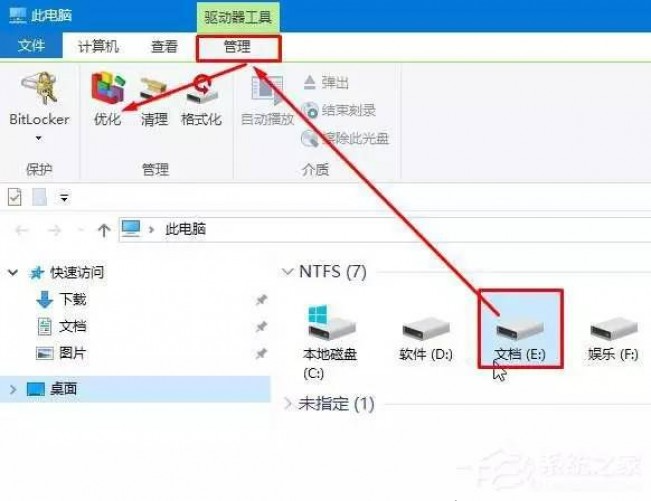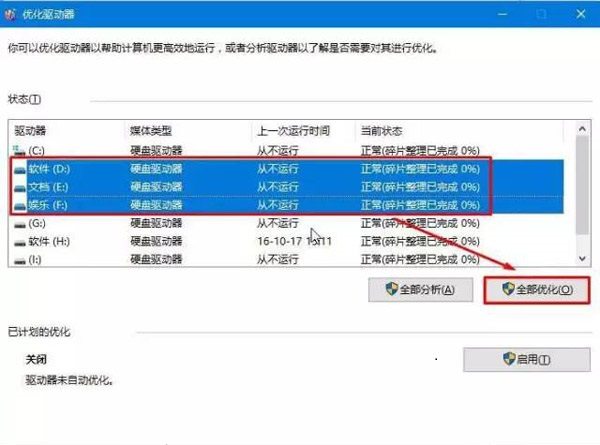How to avoid and clear disk fragmentation in Linux systems
Linux system is a widely used operating system, which has many advantages, such as stability, security, efficiency, etc. However, the Linux system is not perfect, it will also face some problems, one of which is disk fragmentation. Disk fragmentation means that the data blocks of files in the file system are scattered in different locations on the disk, resulting in reduced reading and writing efficiency and even affecting system performance and stability. So, why does disk fragmentation occur in Linux systems? How to effectively avoid and clear disk fragmentation? This article will answer these questions for you and provide some practical methods and techniques.
Benefits of disk defragmentation
1. Disk defragmentation can make the system run more smoothly, reduce lags, and improve system performance.
2. It should be noted that users who use solid-state drives must not use the "disk defragmentation" function. Because the technologies used are different, using the disk defragmentation that comes with Windows will greatly shorten the life of the solid-state drive.
Methods and steps for disk defragmentation
Open "This PC", select any disk drive letter, and then click "Manage" - "Optimize"

Select the defragmented disk, you can use "Ctrl" and "left mouse button" to select multiple disks, then click "Optimize" and wait patiently for the defragmentation to complete.

Now that you know the benefits of disk defragmentation, it is best to develop the habit of regularly defragmenting disks.
Through this article, we learned about the causes and harms of disk fragmentation in Linux systems, as well as how to check, prevent and defragment disk fragmentation. We know that due to the use of a log file system in the Linux system, the generation rate of disk fragmentation is relatively low, but this does not mean that it can be ignored. We should regularly monitor disk usage and try to avoid low disk space or excessive partitioning to reduce the possibility of disk fragmentation. If we find that the disk fragmentation rate is too high, we can copy files, format partitions, or use tools such as e4defrag to defragment the disk. Of course, before performing any operation that may affect files or data, we must make a backup to prevent accidents.
The above is the detailed content of How to avoid and clear disk fragmentation in Linux systems. For more information, please follow other related articles on the PHP Chinese website!

Hot AI Tools

Undresser.AI Undress
AI-powered app for creating realistic nude photos

AI Clothes Remover
Online AI tool for removing clothes from photos.

Undress AI Tool
Undress images for free

Clothoff.io
AI clothes remover

Video Face Swap
Swap faces in any video effortlessly with our completely free AI face swap tool!

Hot Article

Hot Tools

Notepad++7.3.1
Easy-to-use and free code editor

SublimeText3 Chinese version
Chinese version, very easy to use

Zend Studio 13.0.1
Powerful PHP integrated development environment

Dreamweaver CS6
Visual web development tools

SublimeText3 Mac version
God-level code editing software (SublimeText3)

Hot Topics
 What computer configuration is required for vscode
Apr 15, 2025 pm 09:48 PM
What computer configuration is required for vscode
Apr 15, 2025 pm 09:48 PM
VS Code system requirements: Operating system: Windows 10 and above, macOS 10.12 and above, Linux distribution processor: minimum 1.6 GHz, recommended 2.0 GHz and above memory: minimum 512 MB, recommended 4 GB and above storage space: minimum 250 MB, recommended 1 GB and above other requirements: stable network connection, Xorg/Wayland (Linux)
 Linux Architecture: Unveiling the 5 Basic Components
Apr 20, 2025 am 12:04 AM
Linux Architecture: Unveiling the 5 Basic Components
Apr 20, 2025 am 12:04 AM
The five basic components of the Linux system are: 1. Kernel, 2. System library, 3. System utilities, 4. Graphical user interface, 5. Applications. The kernel manages hardware resources, the system library provides precompiled functions, system utilities are used for system management, the GUI provides visual interaction, and applications use these components to implement functions.
 vscode terminal usage tutorial
Apr 15, 2025 pm 10:09 PM
vscode terminal usage tutorial
Apr 15, 2025 pm 10:09 PM
vscode built-in terminal is a development tool that allows running commands and scripts within the editor to simplify the development process. How to use vscode terminal: Open the terminal with the shortcut key (Ctrl/Cmd). Enter a command or run the script. Use hotkeys (such as Ctrl L to clear the terminal). Change the working directory (such as the cd command). Advanced features include debug mode, automatic code snippet completion, and interactive command history.
 How to check the warehouse address of git
Apr 17, 2025 pm 01:54 PM
How to check the warehouse address of git
Apr 17, 2025 pm 01:54 PM
To view the Git repository address, perform the following steps: 1. Open the command line and navigate to the repository directory; 2. Run the "git remote -v" command; 3. View the repository name in the output and its corresponding address.
 How to run java code in notepad
Apr 16, 2025 pm 07:39 PM
How to run java code in notepad
Apr 16, 2025 pm 07:39 PM
Although Notepad cannot run Java code directly, it can be achieved by using other tools: using the command line compiler (javac) to generate a bytecode file (filename.class). Use the Java interpreter (java) to interpret bytecode, execute the code, and output the result.
 Where to write code in vscode
Apr 15, 2025 pm 09:54 PM
Where to write code in vscode
Apr 15, 2025 pm 09:54 PM
Writing code in Visual Studio Code (VSCode) is simple and easy to use. Just install VSCode, create a project, select a language, create a file, write code, save and run it. The advantages of VSCode include cross-platform, free and open source, powerful features, rich extensions, and lightweight and fast.
 What is the main purpose of Linux?
Apr 16, 2025 am 12:19 AM
What is the main purpose of Linux?
Apr 16, 2025 am 12:19 AM
The main uses of Linux include: 1. Server operating system, 2. Embedded system, 3. Desktop operating system, 4. Development and testing environment. Linux excels in these areas, providing stability, security and efficient development tools.
 How to run sublime after writing the code
Apr 16, 2025 am 08:51 AM
How to run sublime after writing the code
Apr 16, 2025 am 08:51 AM
There are six ways to run code in Sublime: through hotkeys, menus, build systems, command lines, set default build systems, and custom build commands, and run individual files/projects by right-clicking on projects/files. The build system availability depends on the installation of Sublime Text.






